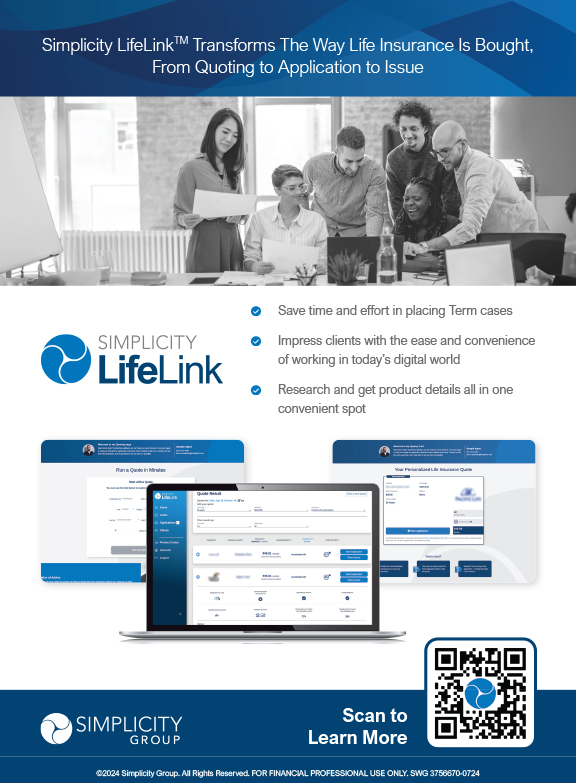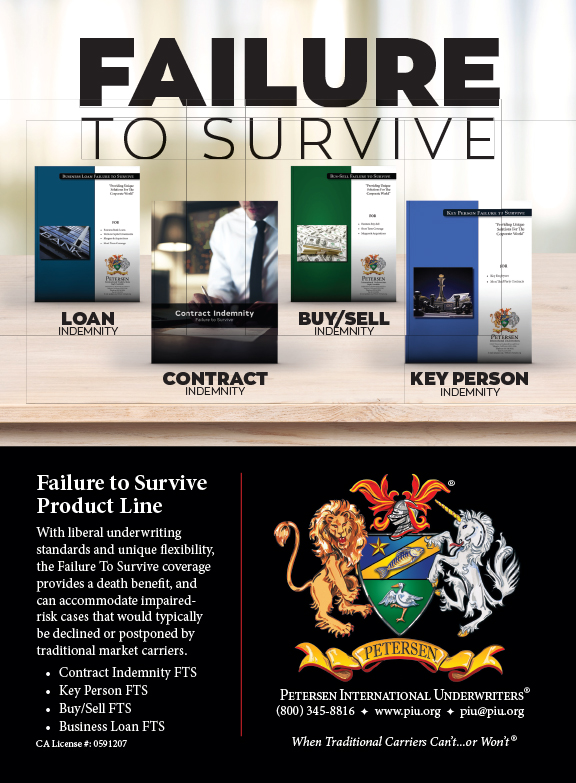A question that I have from my agents occasionally is this, “Does my client do an income rider now, or do they buy an accumulation product now and then purchase an income product once they hit retirement?”
Let’s use an example to clarify this question. You have “Bill,” a 55-year-old that wants to retire in 10 years (age 65) and he has $100,000 that he is looking to tap into for retirement income at age 65. The question is, does he go with the “1-Step” strategy with just one GLWB (Guaranteed Lifetime Withdrawal Benefit) Annuity today, or does he go the “2-Step” strategy where he chooses an accumulation strategy today then in 10 years moves those funds into a GLWB Annuity or a SPIA (Single Premium Immediate Annuity)?
The Math
First off, the wonderful math that exists today around the GLWBs oftentimes make it hard to justify going with the “2-Step” strategy. Said differently, going into an accumulation product (accumulation annuity, stocks, bonds, etc.) today with the expectation that in 10 years one can accumulate enough funds to generate the same income as the GLWB product is a lofty goal.
One of my favorite GLWB annuities will pay a 10 percent simple interest “rollup rate” on the income value between now and whenever the client activates income, even if income is not activated until say age 80. So, at a 10 percent simple interest rate, it would double between now and our hypothetical client’s (Bill) age 65 (10 years). Then, this particular product has a seven percent payout factor. The end result is our $100,000 would end up with an “Income Benefit Base” of $200,000 at age 65. Then, when you multiply that $200,000 by the seven percent payout factor, that means that product would generate $14,000 per year in lifetime income that is guaranteed for life.
When you think of those guarantees on the GLWB, what is the likelihood that you could use the “2-Step” strategy to replicate that? Let’s discuss a couple ways one could look at the “2-Step” strategy and compare the $14,000 that we know is guaranteed with our “1-Step” strategy.
1) 2-Step strategy while using a four percent rule of thumb: With this strategy, Bill would accumulate funds in a good accumulation annuity or a stock/bond portfolio, then he would use the well-known four percent withdrawal strategy. Here is the quick math that I do when I assess this strategy. In 10 years, by using a four percent withdrawal rate, what would the account balance need to grow to in order to get the $14,000 in income that is guaranteed to us with the GLWB? When you divide $14,000 by .04, it comes out to $350,000. So, the question is, can Bill’s “investment advisor” reliably turn that $100,000 into $350,000 over the next 10 years in order to give him the same level of income that the GLWB is guaranteeing? The odds are up there with me winning a ballerina competition. Not likely! (Note: Technically, there is more to this conversation as the four percent rule of thumb technically includes inflation adjustments. If you would like my whitepaper on this, email me.)
2) 2-Step strategy while using an annuity in 10 years: This is the notion that we will still use an annuity, but not until it is time for income. That income can be generated from either a GLWB annuity at that time (age 65) or from a Single Premium Immediate Annuity. We will discuss both below.
GLWB at age 65: Assuming that the seven percent payout factor will still be there in 10 years on whatever value the funds have grown to, it does not take an actuary to tell us that we would need Bill’s $100,000 to grow to $200,000. Then, when he moves that $200,000 into a GLWB annuity and activates income, it would give him the same $14,000 per year. In order for $100,000 to grow to $200,000, the accumulation strategy would need to generate a 7.2 percent compounded rate of return. Can Bill’s “investment advisor” do this with 100 percent certainty? He “may” be able to double his money over 10 years, but it is definitely not a certainty. With the GLWB, that end result of $14,000 is a guarantee.
SPIA (Single Premium Immediate Annuity) at age 65: With this strategy, we use a SPIA in 10 years instead of the GLWB. Once upon a time, the gap between what SPIAs paid and what a GLWB would pay was wider. What that would mean in our example is, by using a SPIA instead of a GLWB, Bill should not need to accumulate as much in retirement savings to generate the same income as what the GLWB would, because SPIA payouts are usually larger. If our GLWB Payout Factor at age 65 is seven percent, then shouldn’t a SPIA pay out much more? Not really.
I ran a SPIA illustration from one of the top SPIA companies with the assumption that we are 10 years down the road and Bill is now age 65 and has managed to grow his $100,000 to $200,000. He now wants to move the $200,000 into the SPIA. Basically, I wanted to compare what a SPIA payout would be on $200,000 versus the $14,000 that the GLWB would guarantee us. The “Life Only” SPIA pays out $15,154 per year. (Note: If you chose a “Life and Period Certain,” as I would recommend, the payouts are even less.)
Again, $15,154 is not much higher than our $14,000 that we can guarantee today.
Using the “slightly” higher SPIA payout in our example, how much would Bill need to accumulate to get the $14,000 in guaranteed income? He would need to grow his money to around $185,000 over the next 10 years. Is it possible? Yes. Is it guaranteed? No.
Now, whether I am just generically explaining why consumers should look at GLWBs today or getting more technical and comparing the math of GLWBs today (1-Step) versus a GLWB/SPIA in the future (2-Step), there is a very important point that I always make.
These products are the best that I have seen in my 25 years in the business, which spans the entire existence of GLWBS, which started in the early 2000’s. As a matter of fact, I am sure some of you that have been around for a while are looking at my assumption in the “2-Step” strategy that these same products will exist 10 years from now with a little bit of skepticism. You would be correct. These wonderful products and the pricing around these products that exist today may not be here 10 years from now, which is actually the #1 reason I often choose the “1-Step” strategy over the “2-Step” strategy. With the “2-Step” strategy, not only is Bill hoping and praying the accumulation strategy performs well, but he is also hoping and praying that these products and pricing will still exist 10 years from now. That is a lot of hoping and praying. My commentary and experience on these products going the way of the dinosaur can be seen in this month’s issue. The title is: Annuities: My Paranoia Of Product Extinction.




























